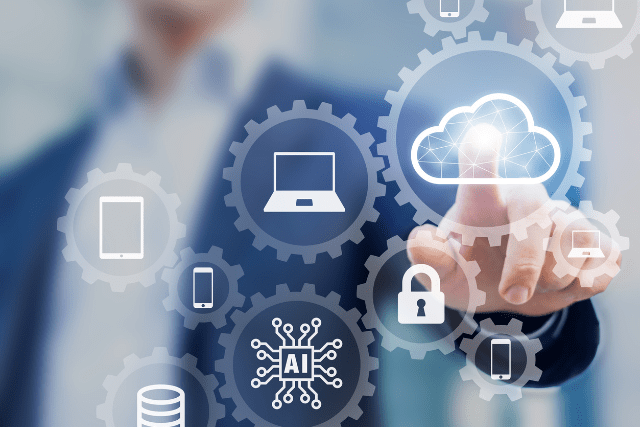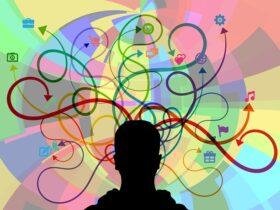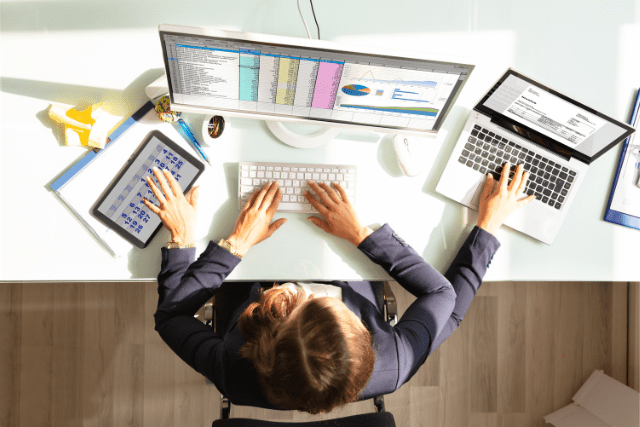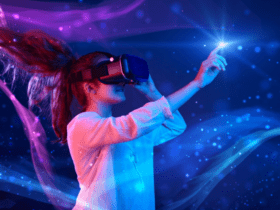We all multitask, and it’s an essential part of our lives. But what are the Secrets Behind Multitasking? And the science behind it? How does our brain process information when we multitask?
Let’s explore the human brain’s complexities and how it processes information when multitasking. We will discuss the different types of multitasking, its pros and cons, effects on performance, strategies for effective multitasking, technology’s impact on multitasking, and what the future holds.
So come along with us as we unravel the science behind how our brains process information when juggling multiple tasks!
Key Takeaways
- Multitasking involves doing multiple tasks simultaneously and using different parts of the brain.
- Multitasking can lead to mental fatigue, difficulty concentrating, inaccurate results, divided attention, stress, and anxiety.
- Technology is changing how we multitask, and task overload and distraction are increasing.
- Strategic use of technology and setting rules for technology usage can lead to greater productivity, but good time management skills and prioritizing tasks are essential.
Overview of the Human Brain
You’ve got a big brain that’s capable of amazing things! Let’s look at the human brain’s anatomy and how it works. Our brains comprise billions of neurons interconnected to form neural networks. These neurons communicate with each other to process information, store memories, and help us make decisions.
The complexity of the human brain is what allows us to multitask effectively. As we receive input from our surroundings, our brains quickly analyze all available data to develop suitable responses. For example, when driving a car, our brains must constantly assess multiple inputs like speed limits, traffic lights, pedestrians crossing streets, etc., and respond accordingly within seconds.
How Our Brain Processes Information
Your mind rapidly shifts between tasks, yet it can process them all simultaneously. How does the brain manage this feat? The answer lies in a combination of brain anatomy and multitasking trends.

The human brain comprises billions of neurons that process and store information. Each neuron consists of a cell body, several dendrites that transmit signals from other cells, and an axon that carries out signals to other cells. Neurons communicate with each other by forming synapses that allow electrical impulses or chemical messengers called neurotransmitters to pass between them. This intricate web of neurons enables us to think, remember, learn new things, and multitask efficiently.
Multitasking involves simultaneously performing two or more tasks using different brain parts. For example, when we watch television while talking on the phone or listen to music while studying, our brains utilize different areas simultaneously. This allows us to switch quickly between tasks without sacrificing quality or accuracy in either one.
As such, it has become increasingly important for people today as technology advances and demands on our attention increase exponentially – enabling us to get more done in less time than ever! Effectively reaping these benefits requires knowing how best to capitalize on your unique capabilities and use available resources without overloading your cognitive load; understanding how our brains process information can help us do just that!

As we explore types of multitasking further, it’s important to note how this knowledge may be used most effectively to maximize productivity while minimizing exhaustion levels.
Types of Multitasking
Discover how to capitalize on your abilities and resources to optimize your multitasking potential. We refer to ‘multitasking’ as doing multiple tasks simultaneously – such as talking on the phone while eating lunch or checking emails while driving. Multitasking is seen by some as an effective way of managing time and completing tasks quickly. However, different types need to be understood to contextualize their use.
The first type is physical multitasking, where a person performs two physical activities simultaneously, like running and texting. The second type is perceptual multitasking, where a person does two activities that require attention but not movement – for example, playing chess and reading a book. Finally, cognitive multitasking involves using two or more mental processes, like solving equations while memorizing new words in another language.
Various techniques are available for improving our ability to multitask effectively; breaking down big tasks into smaller chunks so they are easier to manage; focusing on one task at a time; using lists and reminders; eliminating distractions; and taking regular breaks all help improve productivity. With these tips in mind, you can maximize the benefits of multitasking without reducing the efficiency or quality of work.
The Pros and Cons of Multitasking
Multitasking can be an effective way to get more done in less time, but it also has some potential drawbacks. For instance, if you try to listen to a podcast while studying for an exam, the podcast could distract you from focusing on the material. Taking on too many tasks at once can lead to:
- Mental fatigue
- Difficulty concentrating
- Inaccurate results
- Divided attention
- Stress and anxiety.
Though multitasking may seem like a great way to save time, it could cost you more in the long run. When our brains are asked to handle multiple tasks simultaneously, they become overwhelmed and unable to focus on any one task effectively. This means that not only do we waste time trying to multitask, but our performance on each task will also likely suffer.
It’s important to recognize when taking on too much will hurt our productivity rather than help it. Transitioning into focusing solely on one task at a time allows us more focus and concentration, leading us closer to achieving optimal performance with fewer mistakes or errors.
Effects of Multitasking on Performance
Doing multiple tasks at once can have a detrimental effect on one’s performance. Task switching, a part of multitasking, is associated with slower completion times and increased mental fatigue. Studies have also shown that trying to do more than one thing simultaneously often results in lower-quality work due to divided attention.
The effects of multitasking on performance are especially evident when performing complex activities such as problem-solving or creative writing, as these require deep concentration and focus. It is difficult for the brain to shift quickly between tasks, so focus shifts away from the primary task resulting in decreased productivity. Furthermore, multitasking can increase errors, affecting work quality and confidence levels.
These findings suggest that prioritizing tasks may be beneficial for completing them efficiently and effectively without having your cognitive resources stretched too thin. Moving forward, it may be wise to consider strategies for effective multitasking to maximize output while minimizing effort expended.
Secrets Behind Multitasking: Train the Brain
Now that we have discussed the effects of multitasking on performance let’s move on to how to multitask effectively. Multitasking can be a great way to stay productive and increase efficiency in everyday tasks and activities.
However, it is important to understand that our brains are not wired for multitasking; instead, they are designed for ‘divided attention’ or to perform multiple tasks simultaneously without sacrificing quality or accuracy. There are several strategies we can use to multitask effectively:
- organizing our time:
- breaking down larger tasks into smaller chunks
- prioritizing tasks according to urgency or importance
- creating an effective schedule with reasonable deadlines
- dividing attention between all tasks at hand:
- setting realistic goals and expectations for each task
- avoiding distractions like checking emails or social media too often
- being mindful of when a task is taking too long and needs a break
These strategies can help us become more successful multitaskers; however, it is important to remember that there will still be times when our minds may feel overwhelmed due to the amount of information being processed. That’s why practicing good time management skills ensures all tasks get done promptly without sacrificing quality or accuracy.

With these effective strategies in place, we can ensure that multitasking does not negatively affect our performance but helps us reach our desired results faster and more efficiently. As we move forward into discussing technology’s impact on multitasking, it is important for us to take into account how these strategies could evolve as technology advances.
Technology’s Impact on Multitasking
You may not realize it, but technology is increasingly changing how we multitask. Smartphone addiction has become a huge issue in our society, with many of us feeling like we can’t go an hour without checking out notifications or updates. We have become so accustomed to having access to everything at our fingertips that it’s easy to get overwhelmed by all the stimuli. Digital fatigue is also becoming increasingly common as more people struggle to keep up with the 24/7 demands of their digital lives.
The effects of technology on multitasking are complex and far-reaching. Focusing on just one task can be difficult when there are so many other distractions around us. Our brains become so used to flitting from one stimulus to another that long-term focus becomes harder and harder. The constant need for stimulation has made some people unable to complete tasks without interruption from external sources such as their phones or computers.

Technology can also lead to a lack of self-regulation, making it hard for people to focus on one task until completion before moving on to something else. This increases the chances that important details will get missed or mistakes will be made due to a lack of attention paid during execution.
As a result, multitasking while using technology can often lead to more harm than good in productivity and efficiency. Moving forward, understanding how technology impacts multitasking is critical for us to learn how best to utilize its potential while minimizing any negative consequences associated with its use.
What role multitasking will play in the future?
As technology evolves, how we multitask changes at lightning speed – like a butterfly fluttering from flower to flower. We face unprecedented levels of distraction and task overload, but we can keep up with our daily demands with new tools such as automation and distraction management. To stay productive in the future, we need to focus on mastering efficient multitasking techniques that work well with our natural abilities.
We are constantly bombarded by notifications and emails, which can detract from our productivity. To combat this issue, it’s important to set rules regarding technology usage – such as turning off phone notifications during certain hours or allowing oneself an hour of browsing time per day.
Task automation is another great way to reduce distractions by delegating tasks that require little thought process or decision-making. This frees us up so we can put more energy into higher-value activities requiring more mental attention and effort.
The key to successful multitasking is balancing resources between tasks and managing distractions wisely. By being strategic about how and when you use technology, you open yourself up for greater productivity while still having some downtime in your schedule where you can relax without feeling overwhelmed by your workload. With the right planning strategies in place, you can Train the Brain. And then multitasking doesn’t have to be an overwhelming challenge – rather, it can be a powerful tool for achieving success!
Conclusion
We’ve understood the science behind multitasking and how our brain processes information. Certain types of multitasking can be beneficial, while others can be detrimental to performance. With the right strategies and a mindful approach to technology, we can use multitasking to our advantage. As the saying goes: “Work smarter, not harder!” Multitasking has become essential today, so let’s make it work for us instead of against us!














Leave a Reply